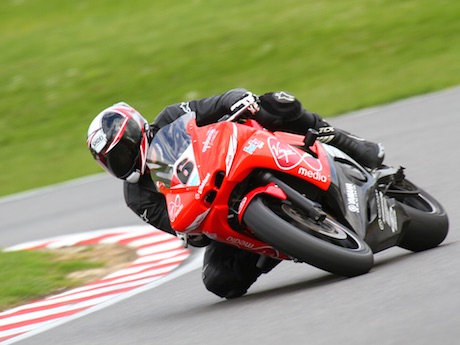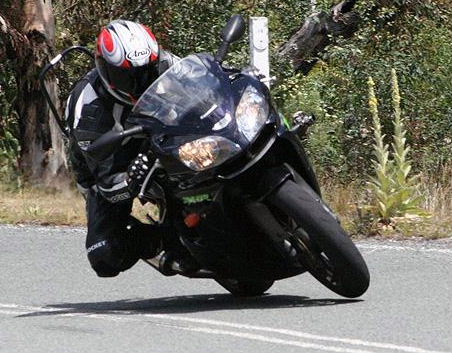Brakes have come a long way from when I first started riding with many new bikes now fitted with sophisticated anti-lock braking systems.
But even the most sophisticated modern anti-lock braking systems are not fool proof.
Most riders were either taught or learned that the majority of braking is from using the front brake. Some rear brake will help, but the majority of stopping power comes from the front brake.
Use on a road and on a racetrack varies to some degree, but the basics are similar.
Front tyres have more grip with some weight transferred to them. So a sharp or aggressive application of the front brake can activate the braking force prior to the weight transferring to the front tyre.
So the first rule of effective braking is to apply gentle pressure to the lever initially to transfer weight to the front tyre, before applying any meaningful lever force. Once the weight has been transferred, then the force applied can be increased.
On the road it is to best to carry out all or as much braking as you can while the bike is fully upright.
Braking can be carried out while the bike is leant over, however, the further the lean angle, the more cornering forces are being applied and the less braking forces the tyre will be able to accept before it breaks traction. So doing as much braking while the bike is fully upright is the best option.
This is not always possible. Add in a distraction, an obstacle mid turn, stopped traffic or a patch of gravel and you may need to use the front brake while the bike is leaning.
This is where a gentle hand is needed in order to carry out both braking and turning forces simultaneously.
Practice is the only way for you to find the limits. Track days and advanced rider training courses are the perfect environments for honing these skills.

A bike will always hold a tighter line when the front brake has been released before being turned in. Letting off the front brake prior to leaning in the bike will also help settle the bike and place less strain on suspension and chassis components. While a racer will often brake right to the apex, on the road, this is not best practice and should only be used where absolutely needed.
Braking mid corner can feel odd. The steering has more weight placed on it, making turning the bike harder. The bike may also want to stand up a little.
Apply a little more force to the inside bar to keep the bike on the line required to make the turn. If you find that you have entered a turn faster than you had anticipated, use some front brake to slow the bike and make the turn.
However be aware, too much brake force and the front tyre may lose traction. So be smooth.
Another method used to assist in tightening a bikes line in a corner is to use a little rear brake.
Dragging the rear brake slightly, can assist in tightening your line. Again too much brake and you may lose grip, but a little will assist in you making the turn.
It is better to use a little brake, either front or rear while leaning the bike, than to stand the bike up and brake hard. It is something that should be practised, so when the technique is needed, you can operate it successfully without losing front or rear grip.
Remember that a bike will maintain a tighter turning radius for any given lean angle with the throttle slightly opened.
Watching racers like Casey Stoner through turn 3 at Phillip Island is an example of this method.
They use the throttle to steer the bike through the corner.
I’m not suggesting you go out and try this. Matter of fact, unless you are an A Grade road racer with some experience, I’d suggest rear wheel steering is best left to the experts.
However, gentle throttle application in a corner can assist in making the bike turn sharper.
Practice is the key. Every rider should be encouraged to attend advanced rider training where these techniques can be practised under supervised and safe conditions.

- About the author/test pilot: Marty Thompson, 48, has been riding since he was a kid, got his first road bike in 1983, raced road bikes from 1993-1997 and has owned more than 30 bikes. He was a B support rider for Cosway Motorcycles/TKA in 1996 with Kevin Curtain as his team mate. He bought Troy Bayliss’s 1995 SS bike from Gavin Cosway and raced that in 1996/7.


